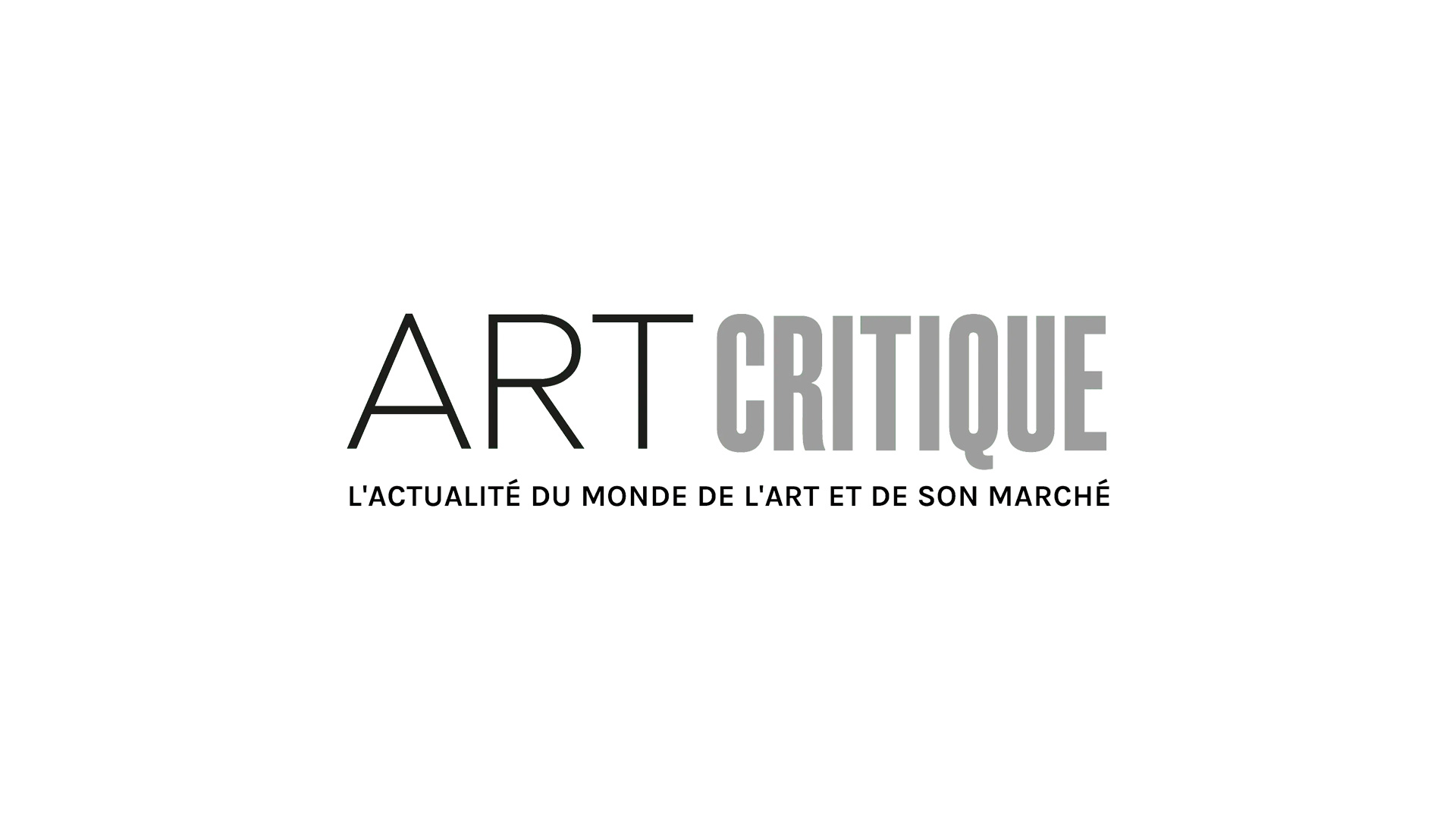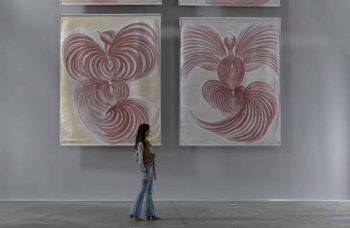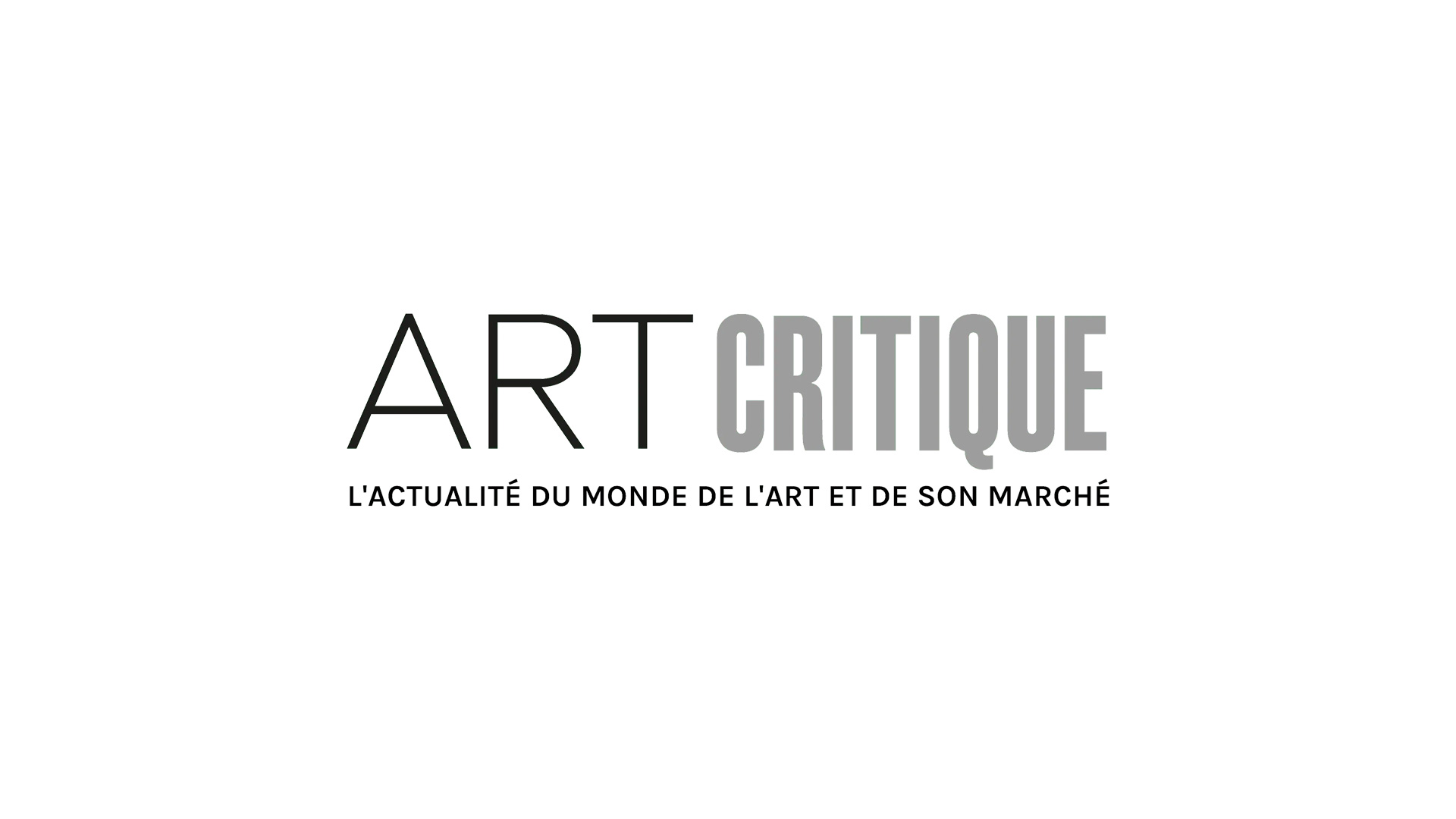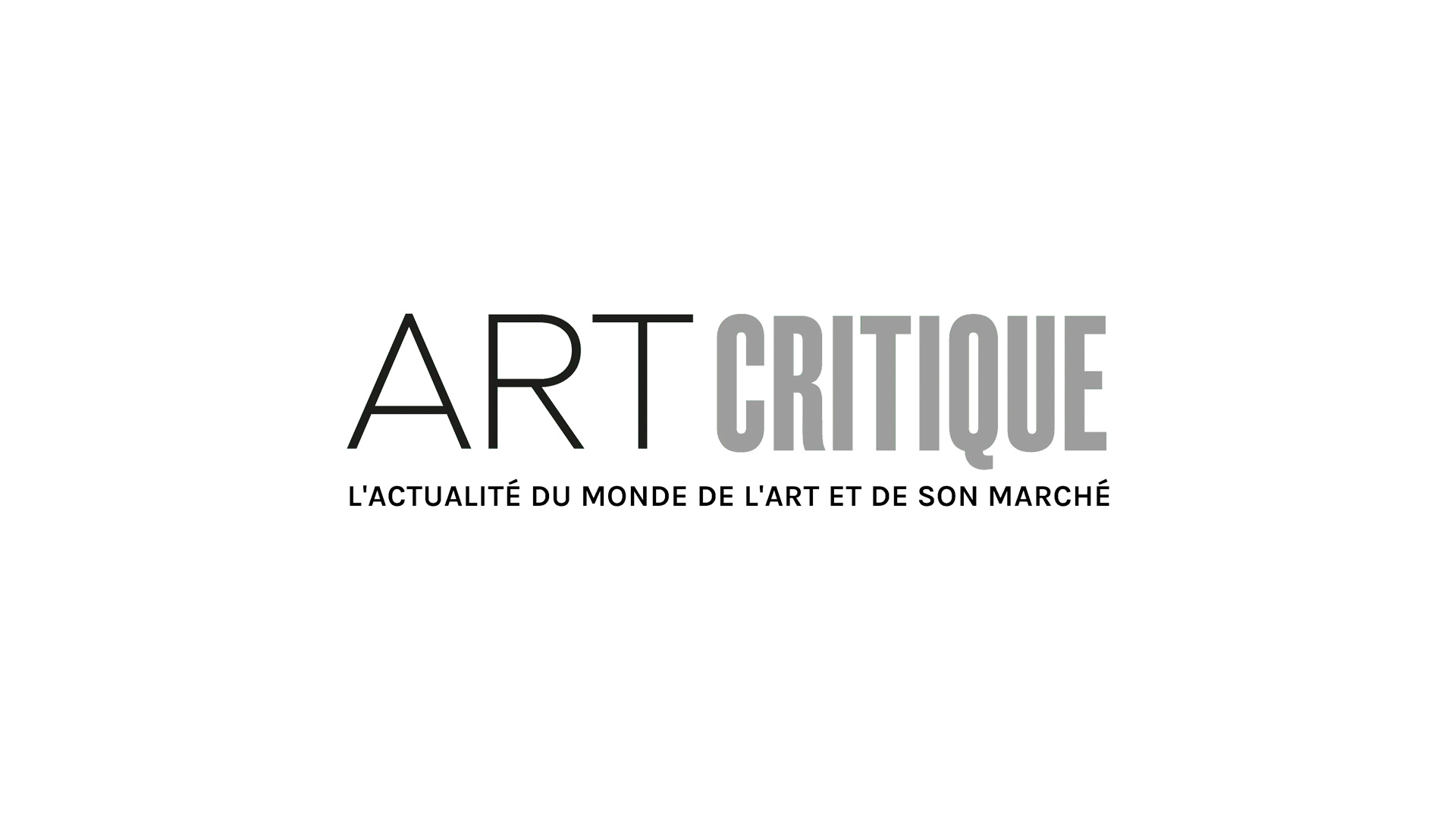A monumental painting by Chris Ofili opens the Frieze Fair with an image of this multidimensional eros. The erotic feminine — a group of Aphrodites (incredibly ubiquitous across painting history) — is portrayed as part of an ascending mountain, which is also a fountain that flows back down into the cup of a masculine figure (archetypally, the ego, or incarnated self, male or female).
But, as Americans, we are far from understanding the vitality of Aphrodite and the mystic value of eros. At the Frieze, we make a mall out of art; we turn art into commodity, into the collectable. Art fairs flatten the artistic vision into a department store. And thus, eros is lost; we forget that life (not to mention “art”) is about experience; we think life is about acquisition!
However, the symbolic eros, a deeply-felt Aphrodite wishes to say: We don’t acquire life, we live it!
But I must backtrack away from The Frieze — as Ofili’s work primarily points us inwards, towards the personal, introverted experience of eros.
Calypso and Odysseus
Entering into a stripped-down, pristine antique townhouse, and up a flight of spiraling stairs, amongst the dapper Upper East Side milieu, I came upon Ofili’s largish canvas of a green mermaid figure, mysterious, intoxicatingly swimming in bejeweled waters of the deep psyche.
These understated, yet decorative and ornate paintings were punctuations to a bounty of textbook-sized watercolors. The first gallery portrayed a dozen variations on an “Calypso” composition, with illustrative use of rich color and winding line.

Two birds, rendered in gold leaf, floated above the heads of the two nebulous lovers, time after time, in some variation of swimming embrace and love-making song.
This is the theme of a “dalliance” — sure — Odysseus’s rendezvous with a nymph before continuing his hero’s journey. But, this is the beginning of the spontaneous theatre springing from Ofili’s imagination.
His style decolonizes the myth from its Eurocentric paintings of yesteryear. They become something else in him; the myth is alive in his psyche, today. And, It’s alive when we look at it, too: the nymph and hero in the ecstasy of love — the mystic swimming in the love of the soul.
Let us assume that the artist has a public role. The dalliance seen through symbolic eros, opposes a Western heroic mindset of productivity, where we put work over life. Here, the mystic eros presents the value appreciating life — to know life, is to love it.
Privately though we see: for the artist to meditate on this eros, he practices filling his psyche more fully with the fiery waters.
Ofili’s Mystic Eros
Evident in the watercolors is the way in which, for Ofili, the heat of eros is not so much a compulsion, but rather a meditative absorption, a transcendence deeply rooted in earth. Calm — attentive, loving — even while immersed in the intoxicating eros, Ofili is ever so relaxed, painting with the delicate watercolor.
In this work Ofili paints an amorphous love, floating as much in the mermaid’s waters as in the cosmos. Is this coral or sea grass surrounding the couple — no, rather it is vortexes of the eros-vitality that flow and spiral within the lovers too.
They are elegant, understated — even with the mica flakes which add a luminous sparkle throughout. The charcoal lines smoothly contour his languid figures, and lush color is laid in, smoothly, part of the meditation. An expression of mystical eros.
Sensual Eros
Ofili’s approach renders a symbolic eros, rather than the sensuality and sexuality of Magritte or Picasso’s woman in mirror, for example. However, mystical eros may be present in the same psyche, all at once with sexual desire — beauty and the heightened awareness as as the alluring nature of both mystical and sensual love.
Exploring the intrapsychic (symbolic) eros can lead to the overwhelming effects of the unconscious, or instinctive psyche. This is the danger of “psychosis” — madness the artist manages to overcome, as well as the mystic.
But, the far more common danger associated with eros, has to do with the romantic dimension, as seen in human affairs, liaisons and marriages. Here, we get an insight into the immense power of eros, as romantic love, to heat up the psyche, causing intensification, change, and, oftentimes, hurt.
Othello Etchings
Included at the Zwirner exhibition: Ofili touches on Shakespeare’s “Othello” in ten very loose etchings intended for publication by Zwirner Press. These etchings, a clear reference to Matisse’s illustrations for the “Fleurs du Mal” by Baudelaire.
In the loose etchings — an homage to Matisse’s signature spontaneity — Ofili picks up on the madness of the “Othello” tragedy. All the unwarranted jealousy and obsessive thinking, trademark of those caught in the fiery floods of romantic eros.
This adds another contour to the mystery of eros: what happens when it’s projected onto the lover. In the mirrors of the unconscious we see all sorts of fascination laden projection: love at first sight, infatuation, the impossible love. Not to mention: the oh so terrible, but unavoidable fact that people have always fallen, time and time again, for their next femme fatale or don juan.
So, romantic eros is messy, but essential to human experience; and mystical eros is dangerous but possible to taste; yet Ofili portrays contact with this wide variety of eros, as well as teh subtlety of their interaction.
Ofili at Frieze
Behind the 100 ft vision of symbolic eros, were rare pastels that reached back to his first experiments with Greek Myth, around 2011 – 2012, when he was commissioned by the National Gallery to work from Ovid’s “Metamorphoses.” These “Poolside Magic” works at Frieze date back several years. These represented the expression of a symbolic eros which is blossoming within the artist. Ofili has transposed the Greek myths into his own world, exploring the sensual as a symbolic experience.
The way he drafts the figures, they are sensual, but are not sexualized. His works portray the reality of the psyche: it’s beautiful, erotic, dangerous, infinite in its unknownness (potential), mythic, imaginative and access to all of this is the source of, not just healing, but vitality.





